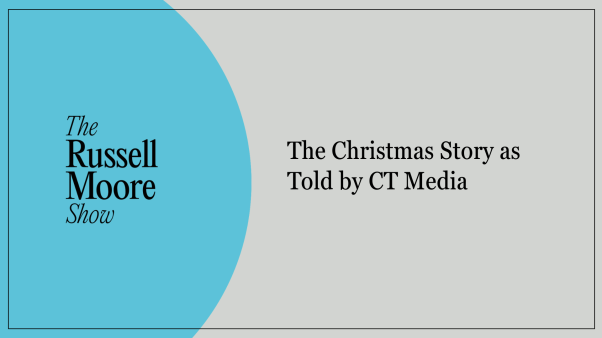The absolute best worship service I have ever been to was in an Orthodox church in downtown Chicago. It was full of evangelical converts to Orthodoxy, and so it had the rich, historic liturgy and singing combined with evangelical fervor. I dare say I felt lifted into the presence of God, or better, that the presence of God had descended on us.
The absolute worst worship service I have ever attended was an Orthodox church in Philadelphia. The priests led the liturgy from behind the iconostasis—a screen of icons separating the sanctuary (where the altar sits) from the nave (where the congregation sits). The only response we in the congregation were called to make was the occasional “Amen.” We didn’t even join the priests in singing as I recall. My Protestant sensibilities were so offended, I walked out in the middle of the service.
I relate this experience to say that even though I believe that in general Orthodoxy exalts and glorifies God like no other Christian tradition, it is far from perfect. It also shows that even a tradition that has all the right “tools” for adoration can stumble.
For those following the Elusive Presence series, last week I concluded the four-part series that argued for a new way of thinking about the essence and ultimate purpose of the church. For the next few weeks, I want to explore what this might look like in the pew and pulpit. I’ll examine the ways in which we succumb all too often to the horizontal and suggest some ways, upward. I’ll look at the dynamics of preaching, Bible reading, and the sacraments/ordinance, in particular. Let me start, though, with the dynamics of evangelical worship, which has its own highs and lows.
It’s All About Worship
Our understandable and often impressive yearning is to take the love of God into the world. Yet as I’ve argued, I believe Scripture is clear that our first call is to stand in the presence of our loving God and worship him. Again, as the Westminster Catechism puts it, our chief end is “to glorify God and enjoy him forever.” The framers of that well-known line were deeply influenced by the sweep of biblical history and the end toward which history moves.
First note that, depending on how one numbers them, three or four of the Ten Commandments are about proper worship:
You must not have any other god but me.
You must not make for yourself an idol of any kind.
You must not misuse the name of the Lord your God.
Remember to observe the Sabbath. (Ex. 20:3, 4, 7, 8, NLT throughout)
If that were not enough, add to that the many detailed laws prescribing how the Temple is to be built and adorned, and how worship is to be conducted. God apparently did not think that any detail was too small when it came to worship. Take, for example, the instructions regarding the table that is to hold the Bread of the Presence:
… make a table of acacia wood, 36 inches long, 18 inches wide, and 27 inches high. Overlay it with pure gold and run a gold molding around the edge. Decorate it with a 3-inch border all around, and run a gold molding along the border. Make four gold rings for the table and attach them at the four corners next to the four legs. Attach the rings near the border to hold the poles that are used to carry the table. (Ex. 25:23–28)
Then there is the Book of Psalms, which is nothing but a hymnbook for worship.
To be sure, in the Prophets, the Lord chastises his people for their overly fastidious worship, especially when their so-called devotion to God was not matched by the love of neighbor. And so we find God often saying, in one way or another, that true worship is to seek justice for the oppressed. But in the end, ethics never replaces adoration in the prophets but is seen as a necessary complement to true worship. In the end, it’s all about worship. As the prophet Micah recorded:
In the last days, the mountain of the Lord’s house
will be the highest of all—
the most important place on earth.
It will be raised above the other hills,
and people from all over the world will stream there to worship. (4:1–2)
This vision of the end of history—meaning both its destination and its purpose—is hardly abandoned in the New Testament. From Paul’s vision of every knee bowing and every tongue confessing Jesus as Lord (Phil. 2) to John’s vision of the 24 elders glorying God (Rev. 4) and many places between, we see worship as the great and wondrous activity in the kingdom of heaven.
Looking for that Special Feeling
In the last decade or so, evangelical congregations have woken up to the centrality of praise and adoration as Scripture commands. One of the great developments of our time is how we worship. “Praise choruses” and contemporary worship music, for all their limitations, aim our hearts and minds in the direction of God. One does not even have to be taught to lift your face or raise your arms as you sing these songs, as the songs themselves often drive one upward to seek and praise God. One has to be a spiritual miser not to recognize how such music has helped the church worship God.
The temptation of the horizontal is with us always, and it comes in many disguises in our worship.
Yet the temptation of the horizontal is with us always, and it comes in many disguises in our worship. Worship leaders—as they themselves often admit—are tempted to take cues from Finney’s Lectures on Revivals. Every worship leader worth his or her salt knows how to manage the emotions of the congregation, moving them from quiet devotion to raucous praise or from bass-throbbing adulation to whisper-quiet meditation. We don’t have to deny that, despite sometimes obvious manipulation, we’ve been touched by God in such services. But it is a constant temptation to replace God with technique, to seek not the Holy of Holies but mostly devotional exhilaration.
That is to say, many weeks what we mostly want is for worship to give us a good spiritual feeling. I suspect that by our inattention to what we’re singing. We sing various choruses that say, “Bring down your glory” and “show us your face.” But we do not know what we’re asking for. People in the Bible who actually encountered God’s glory fall on the ground in fear. For example, after the miracle of the fishes, Peter knows he has seen glory and that he is in the presence of the Glorious One. He doesn’t give God an ovation. He doesn’t weep with joy. He falls on his knees, begging Jesus to depart from him. The glory of Jesus has made it clear to him that he is a sinful man (Luke 5).
The same thing happens to Isaiah in the Temple. When Isaiah is given but a glimpse of God’s glory, he doesn’t break into song, singing a praise chorus. He actually thinks he is about to die: “It’s all over! I am doomed, for I am a sinful man. I have filthy lips, and I live among a people with filthy lips. Yet I have seen the King, the Lord of Heaven’s Armies” (Isa. 6:5).
In addition, God himself refuses to allow Moses to see his face precisely because it will lead to Moses’s demise (Ex. 33:20).
Even more disturbing is the connection that John’s gospel makes with divine glory. It’s certainly in part about the display of Jesus’ miraculous powers—but they weren’t so spectacular as to prevent some from unbelief. In John’s gospel, Jesus’ glory is a quiet, humble glory that is impossible to discern without faith. This also is glory: the humility of the incarnation and the degradation of crucifixion.
When we sing asking for God’s glory, we are not asking to know the fear of God and the humble suffering that life in him entails. No, if we’re honest with ourselves, we mostly want a good religious feeling. We really aren’t interested fully in what God’s glory is and what it might do to us.
But let me be fair. What we’re often asking for in such praise songs is to know God intimately, personally, and immediately. In this regard, we are very much in tune with the psalmist, who pants after God. We are wise to note, however, that if we get what we ask for, it’s going to be more complex and paradoxical than we can imagine. That’s why it’s another good sign that more and more churches are trying to integrate classic hymns into their offerings, as these do speak to God’s fullness and complexity.
How we actually shape our services points to another horizontal temptation. For example, we have more or less structured worship around two cultural icons: the rock concert and late-night comedy (more of the latter when I write about preaching). On the one hand, many evangelicals churches have a typical band—guitars, bass, electric piano, and drums, along with singers—performing up front. “No, they are leading worship, not performing,” we object. But let’s face it, there is a performative element in everything on the stage. Yes, they intend to lead us in worship, but we’ve all been to services where the music is so loud that we cannot hear the person next to us singing. As much as worship leaders strive to keep their egos in check, they are the first to admit that the very ambiance of contemporary worship makes it nearly impossible for people to not think of them as rock stars—of worship, yes, but rock stars nonetheless.
Even churches committed to the more classical, liturgical worship find the temptation to imitate a rock concert irresistible.
Even churches committed to the more classical, liturgical worship find the temptation to imitate a rock concert irresistible. One Anglican church I’m familiar with, when remodeling a building to worship in, planted the drum set not off to the side with the other musicians but right of the large cross that adorns the center of the stage. In a tradition that grasps the importance of symbols and how they can help us worship, adore God, and draw us into his presence, the imagery is shocking. As worship is moving along, where do we think people’s eyes are going to focus: On a cross that stands still or on the drummer who is keeping the beat and moving rhythmically with the music? One keeps asking oneself, “What is a drummer doing at the foot of the cross?” The clashing symbolism is distracting to say the least.
To be clear, this is one of the most effective churches in the community for reaching out to the lost and hurting in the name of Christ. Yet it is an example of how confused we are about the relationship between the horizontal and the vertical—and the confusing messages we end up sending to ourselves and to those who visit our churches.
Let me be fair in another way: It isn’t as if traditional, liturgical churches have any advantage here. Having been a long-standing member of Episcopal and Anglican churches, I can assure you that it’s not unusual for a post-worship conversation to concern itself with whether some liturgical action or word was done properly, followed by a word to the priest that such-and-such acolyte needs more training.
Or take one extreme example—how to light the Easter fire. This is a small fire kindled at the entrance of the church as a prelude to the Easter vigil, from which the paschal candle is lit (a large white candle symbolizing, among other things, Christ’s resurrection). I remember one otherwise loving and compassionate deacon who was distressed when an interim priest lit the Easter fire with a Bic lighter—as if doing so was a sacrilege. So yes, a focus on the horizontal can tempt the liturgical as well.
Despite the renewed focus on adoration, I suspect that we’re still more interested in the horizontal than the vertical many days. How many times have we heard someone say the traditional picture of heaven sounds pretty boring, like one, long worship service? That says something about what we think of our worship services and what we think of worship. As Puritan theologian Isaac Ambrose put it, “Consider that looking unto Jesus is the work of heaven. … If then we like not this work, how will we live in heaven?” Instead, when we want to make the kingdom of heaven sound more attractive, we talk about it like this: “Whatever you enjoy doing in this life—athletics, woodworking, art, gardening, baking, etc.—will be extraordinary in the life to come.” Or we look forward to a glad reunion with loved ones.
Those sorts of things are indeed part of the glorious age to come. What signals a problem is our hearts. Who of us doesn’t admit that it’s the activities and the reunion with loved ones that gets us more excited than spending eternity glorifying the True, the Good, and the Beautiful One (Rev. 22:3)?
And then there are the repeated refrains we’ve heard and all said at one time or another: “I’m not being fed.” Or “I didn’t get anything out of the service.” Or “I didn’t feel God was present.” Or a hundred other phrases that tip us off that we came to church not to glorify God but to have a certain religious experience.
Rethinking how we do worship begins, then, with keeping the focus on God as he is in all his complexity (not how we want him to be) from beginning to end. It means entering worship looking first and foremost to offer something to God, no matter how we feel or how the service makes us feel. How to do this without getting distracted—well, experienced worship leaders will have the best ideas about that; they negotiate the worship/entertainment, glorifying God/singers tensions every week. They know the challenges. I would think the first step is to recognize that, given how we’ve structured contemporary worship, there is no getting around the fact that this is an ongoing tension.
Everything that happens in a service is in fact worship of God, if we see worship as a great drama or dialogue in which we speak to God and God speaks to us.
I would think another key is to recognize that everything that happens in a service is in fact worship of God, if we see worship as a great drama or dialogue in which we speak to God and God speaks to us.
Many evangelicals have gotten into the terrible theological habit of calling only the first part of our services “worship,” that first part in which we sing praises to God in three or four songs. We say things like, “Before we listen to the sermon, let’s spend some time in worship.” As if the singing is about God and the sermon is not about God. This is a confusion of the first order. As we’ll see in the essays on the Bible and on preaching, this part of the service is also supposed to be about God first and foremost. That’s why traditionally, the entire service—singing, prayer, Bible, preaching, offering, and benediction—is considered worship. It’s all about God.
So that’s one perception we might change. Another has to do with the sacraments/ordinances, which have fallen into disrepute in many evangelical circles. That will be the subject of next week’s essay.
Mark Galli is editor in chief of Christianity Today. If you want to be alerted to these essays as they appear, subscribe to The Galli Report.









